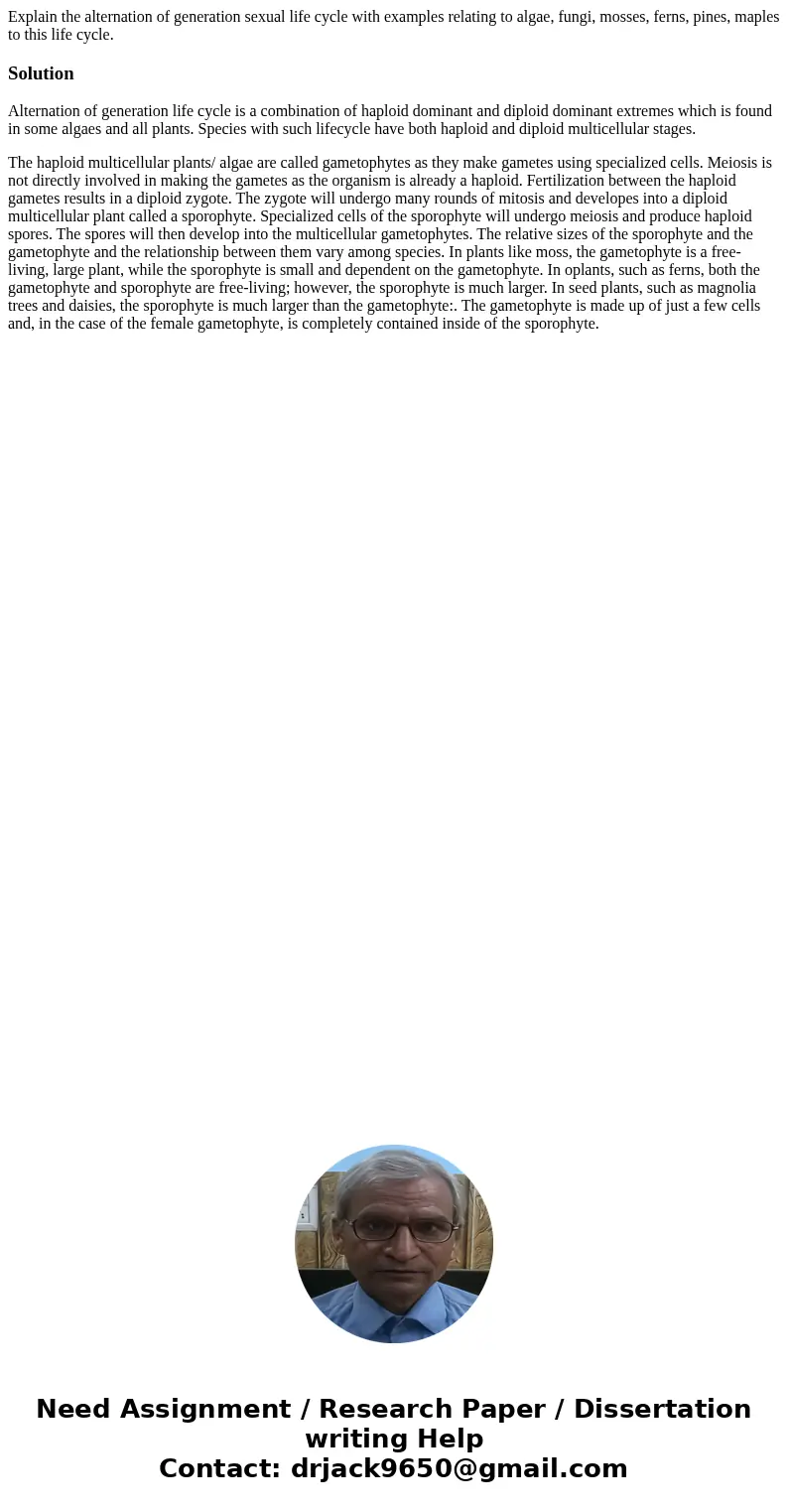Explain the alternation of generation sexual life cycle with
Explain the alternation of generation sexual life cycle with examples relating to algae, fungi, mosses, ferns, pines, maples to this life cycle.
Solution
Alternation of generation life cycle is a combination of haploid dominant and diploid dominant extremes which is found in some algaes and all plants. Species with such lifecycle have both haploid and diploid multicellular stages.
The haploid multicellular plants/ algae are called gametophytes as they make gametes using specialized cells. Meiosis is not directly involved in making the gametes as the organism is already a haploid. Fertilization between the haploid gametes results in a diploid zygote. The zygote will undergo many rounds of mitosis and developes into a diploid multicellular plant called a sporophyte. Specialized cells of the sporophyte will undergo meiosis and produce haploid spores. The spores will then develop into the multicellular gametophytes. The relative sizes of the sporophyte and the gametophyte and the relationship between them vary among species. In plants like moss, the gametophyte is a free-living, large plant, while the sporophyte is small and dependent on the gametophyte. In oplants, such as ferns, both the gametophyte and sporophyte are free-living; however, the sporophyte is much larger. In seed plants, such as magnolia trees and daisies, the sporophyte is much larger than the gametophyte:. The gametophyte is made up of just a few cells and, in the case of the female gametophyte, is completely contained inside of the sporophyte.

 Homework Sourse
Homework Sourse